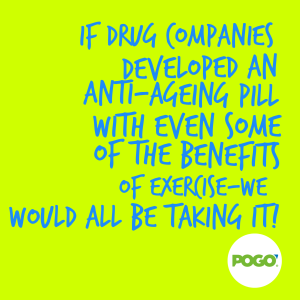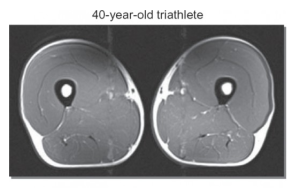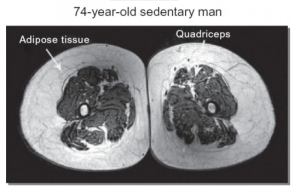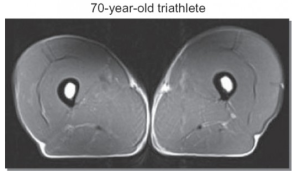The top 5 Benefits of Exercise for Men
The top 5 Benefits of Exercise for Men
As family and work commitments spike many men, particularly in their middle years, allow regular exercise to drop from their priority list.
All men know of the importance of regular exercise. However when the kids are screaming for attention, the bins need taking out, work pressures are significant, and wives needs a helping hand, exercise often slides down the ‘must do’ list of priorities. The urgent and important responsibilities of the man’s world take precedence over the important but seemingly not-urgent responsibilities such as engaging in regular exercise.
Many men can find it difficult to justify exercising when their vortex of responsibilities are the seemingly more urgent ‘to do’s’. Yet staying active for men can be the most effective way to enjoy a long and healthy life, void of physical limitations due to poor health, and lacking the good health to be around in full capacity for their family.
Life Expectancy in Australia
In Australia, a boy born in 2011–2013 can expect to live to the age of 80.1 years and a girl would be expected to live to 84.3 years compared to 47.2 and 50.8 years, respectively, in 1881–1890. Men aged 65 in 2011–2013 could expect to live another 19.2 years (an expected age at death of 84.2 years) and the life expectancy of women aged 65 in 2011–2013 was 22.1 years (an expected age at death of 87.1 years) (1).
There are so many well know benefits of exercise that it is difficult to justify how exercise could be left out of a weekly to do list. In fact if a ‘magic pill’ were to be developed that gave even half of the known benefits of exercise, than we will all be taking ‘it’.
It is well accepted that exercise produces many positive effects on the body. Scientific research has proven that exercise such as running is associated with a wide array of health benefits. These benefits include:
- lower risk of cardiovascular disease
- lower risk of stroke
- lower risk of high blood pressure
- lowered risk of osteoporosis
- lower risk of type 2 diabetes
- lower risk of colon and breast cancer
- reduced risk of clinical depression
- better management of body weight and body mass index
- better cognitive function.
In 2014 researchers discovered that running as a form of exercise may be the ‘magic pill’ of good health, and the ‘fountain of youth’ we all seek. The study found that, compared with non-runners, runners have an incredible 45 to 50 per cent lessened chance of dying from cardiovascular disease. Researchers also found that runners had a three year increase in life expectancy when compared to non-runners. What makes this study and its results so remarkable is that the study included an enormous 55,137 subjects with 24 per cent (13,233) of the subjects being runners. One of the other key findings of this study was that running for even a short time and at slow speeds was enough to result in the markedly reduced risk of dying from cardiovascular disease (2).
However if you are still not convinced that getting moving regularly as a man is worth it than consider the following five benefits for men of regular exercise.
The Top 5 benefits of exercise for men
- Exercise for men promotes lean muscle mass
Lean body mass (or muscle mass) is basically the weight of everything in the body besides fat stores. It includes organs, muscle, blood, bones, connective tissues and much more. Lean mass is thus the pure muscle mass without the fat. Men have more lean mass than women, because their body composition and physiology has more muscles, particularly in the upper body. Thus it makes the muscle’s percentage higher than the one in women. As an aside, for the average adult male about 42% of body weight is skeletal muscle and it’s about 35% for females.
Aging is commonly associated with a loss of muscle mass and strength, resulting in falls, functional decline, and the subjective feeling of weakness. Exercise modulates the morbidities of muscle aging. Most studies, however, have examined muscle-loss changes in sedentary aging adults
In 2013 a group of researchers studied the effect of exercise on 40 high-level recreational ageing masters athletes. These athletes trained 4-5 times per week, and were aged between 40 and 81 years. The study’s findings contradicted the common observation that muscle mass and strength decline as a function of aging alone. Instead the researchers concluded that muscle mass and strength declines may signal the effect of chronic disuse (ie not exercising) rather than muscle aging.
In case you needed further evidence that exercise is important for the development of lean muscle mass in males, the images below illustrates the difference between a sedentary 74 year old male’s leg MRI images and a 70 year male triathlete’s, compared with imaging of a 40 year old male triathlete. The differences are obvious and stark, note the reduced muscle size and the fatty infiltrates (white bits) in the muscle mass of the sedentary male.
The formula below is how lean muscle mass is calculated is shown below:
Lean Body (Muscle) Mass = Body Weight – (Body Weight x Body Fat %)
It is important to note that lean muscle mass improves metabolism, bettered metabolism promotes healthier body weight, and healthier body weight promotes a longer and more active lifestyle.
- Exercise for men boosts good cholesterol levels
As a man’s age increases cholesterol numbers tend to move in the wrong direction. A man’s levels of LDL (low density lipoprotein) otherwise known as ‘bad cholesterol’ tend to increase, while levels of levels of good cholesterol (HDL high density lipo-protein) tend to decline. Such a combination (high LDL and low HDL) is one of the known risk factors for cardiovascular disease. Excessive cholesterol over time will build up on the inside lining of blood vessels such as the coronary arteries that supply the hart with its blood supply. The best way to keep LDL down is to eat a diet low in unsaturated fat, and the best way to boost HDL cholesterol is exercise.
- Exercise for men reduces visceral (bad) fat
Almost 2 in 3 (or 60%+) of Australian adults are over-weight or obese, meanwhile it is estimated that there are more than 1 billion overweight adults worldwide.
Excess weight, especially obesity, is a major risk factor for cardiovascular disease, Type 2 diabetes, some musculo-skeletal conditions and some cancers. As the level of excess weight increases, so does the risk of developing these conditions. Rates of overweight and obesity are continuing to rise in Australia
Being overweight and obese is the second highest contributor to lifestyle disease development, after dietary risks, whilst smoking is the third highest contributor (4).
Regular exercise is one of the most effective ways for men to reduce their visceral fat stores. Typically for men these fat stores are predominantly around a man’s stomach. Think the classic Australian ‘beer gut’. Regular exercise combined with monitored and sensible caloric intake can reduce a man’s fat stores and boost a man’s health.
- Exercise for men boosts testosterone levels
Testosterone is vital for optimal men’s health and vitality. Low levels of testosterone in men can lead to a number of serious health conditions such as: depression, low sex drive, decreased muscle mass, obesity, and osteoporosis. Men with low testosterone have higher rates of heart disease, depression, and even dementia – Low levels of testosterone also decrease strength and muscle mass.
Exercise has been shown to increase testosterone and the right type of exercises can markedly spike testosterone levels. Sprinting, heavy lifting (pushing or pulling), having very short rest periods between exercise sets, lifting to failure, and including legs weights in combination with upper body weights, have all been shown to positively elevate a man’s testosterone levels (5).
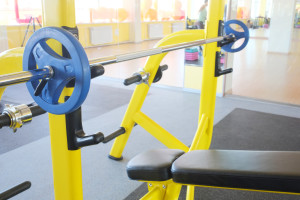
Weight training of the legs and upper body has been found to be effective in spiking male’s testosterone levels.
It should be noted that excessive cardio or aerobic exercise can in fact have the opposite effect and can suppress testosterone levels of males.
- Exercise for men can offer protection against colon cancer
Colon cancer is one of the leading causes of cancer death in men. It is believed that approximately 80% of cases of colon cancer could be prevented. A healthier diet (with more fibre and whole grains) is part of the known risk minimisation prescription. But exercise turns out to be just as important as diet. Studies have shown that physical activity may reduce colon risk in men by as much as 30 to 40% (6).
So there we have it is crucial for men to embrace their joggers verse the couch. It is also paramount that small daily oversights when it comes to engaging in regular physical activity do not become major neglects that may result in poor male health and function later in life.
If you are still struggling don’t do it for yourself, do it for your family.
Happy exercising men.
Brad Beer (APAM)
Physiotherapist, Author AMAZON Best-Selling You CAN Run Pain Free!, Founder POGO Physio
References
- Australian Institute of Health and Welfare ‘Life Expectancy’ http://www.aihw.gov.au/deaths/life-expectancy/
- Lee DC, Pate RR, Lavie CJ, Sui X, Church TS, Blair SN. 2014. ‘Leisure-time reduces all –cause and cardiovascular mortality risk’. The Journal of the American College of Cardiology 64 (5): 472-481.
- Andrew P. Wroblewski MBS, BS, Francesca Amati MD, PhD, Mark A. Smiley MBA, BS, Bret Goodpaster PhD & Vonda Wright MD, MS, Chronic Exercise Preserves Lean Muscle Mass in Masters Athletes, J Physician and Sports Medicine (2013) pages 172-178
- Australian Institute of Health and Welfare ‘Overweight and Obesity’ http://www.aihw.gov.au/overweight-and-obesity/
- 6-exercises-boost-testosterone http://www.midwestmensclinic.com/6-exercises-boost-testosterone/
- Exercise May Cut Colon Cancer http://www.webmd.com/colorectal-cancer/news/20060912/exercise-may-cut-mens-colon-cancer
*Citation MRI images : Wroblewski, A., et. al. Chronic Exercise Preserves Lean Muscle Mass in Masters Athletes. The Physician and Sportsmedicine. Volume: 39, No.3. DOI: 10.3810/psm.2011.09.1933



